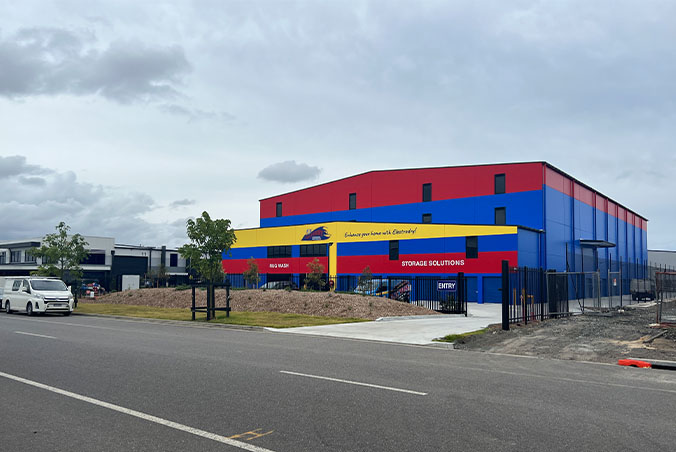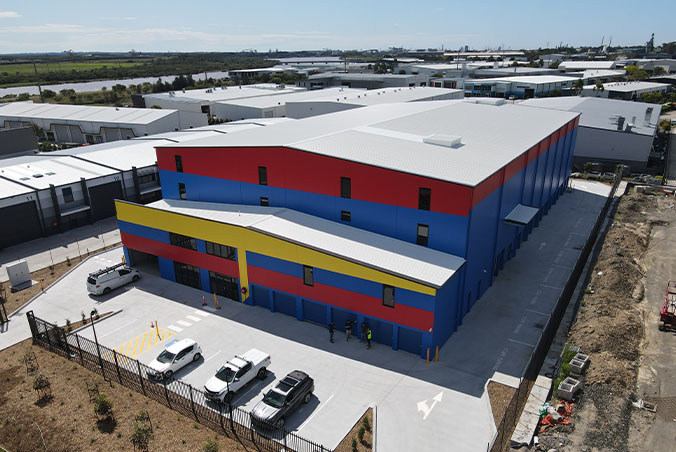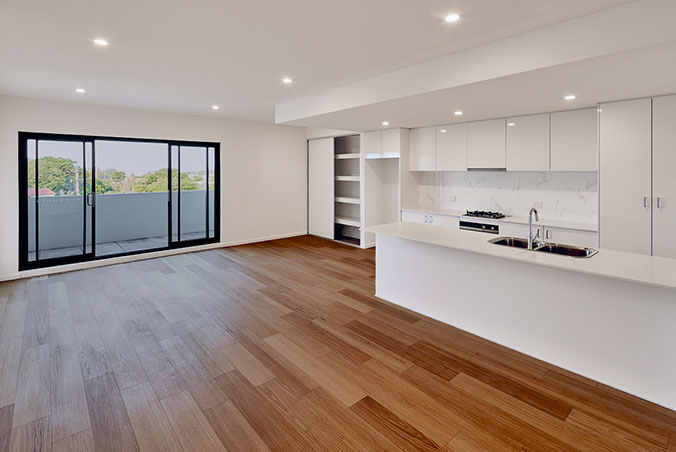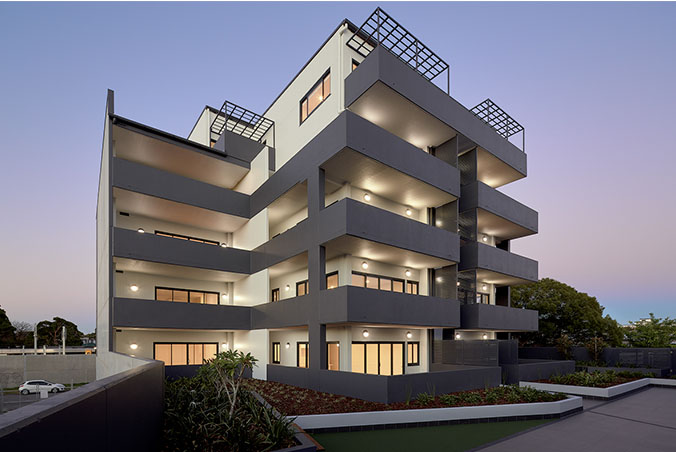Located in the Steel River Industrial Estate in Mayfield West, the Electrodry complex offers four storeys of storage spaces and office suites located at the front.
The bad news is: glazing within a structure are the key failure points for thermal efficiency, water penetration and noise.
The good news is: these factors are carefully regulated, and an experienced and reputable window manufacturer can effectively navigate these complex requirements to ensure comfortable living for decades to come.
Compliance and Performance
The performance of a window suite can be summed up by 4 over-arching criteria:
- Structural Performance
- Water Performance
- Thermal Performance, and
- Acoustic Performance
Each of the above having their own specific requirements, performance targets, tests, and compliance requirements as set out by a variety of building codes and regulations, as well as Australian Standards.
Achieving, and surpassing, any such requirements can be a complex undertaking, involving often competing design requirements. Hunter Windows has the experience and expertise to do just this.
Let’s delve into each performance criteria separately.
Structural Performance
Australian Standard 2047 (AS2047) outlines the performance requirements for windows and doors, covering aspects such as wind load resistance, air infiltration, and structural integrity. Compliance with AS2047 ensures that our products are robust, reliable, and suitable for the demanding conditions of high-rise buildings.
Paramount in high-rise residential projects is the withstanding of significant wind loads and other forces. Hunter Windows ensures compliance with:
- Ultimate Limit State (ULS): This assesses the maximum load-carrying capacity of windows and doors to ensure they remain intact during extreme weather conditions.
- Serviceability Limit State (SLS): This evaluates the deflection and deformation of windows and doors under normal load conditions to ensure functionality and comfort for occupants.
Achieving the above requires a specific combination of framing and glazing, the testing of which is performed in a pressure test rig, which subjects the window to both positive and negative pressures.
Such a rig also subjects the window to water penetration testing.
Hunter Windows’ products have successfully undergone these tests, and all resulting test certificates are available.
Water Performance
High-rise buildings, as mentioned, face increased wind pressure, demanding exceptional water resistance. Hunter Windows employs high-performance seals, gaskets, and drainage systems along with meticulously designed framing profiles to meet the stringent water penetration resistance requirements of AS2047.
For your peace of mind, Hunter Windows undertake expert installation by our own highly-trained team and preferred contractors under close supervision. This ensures a meticulous installation and a quality fit for lasting performance.
Thermal Performance
The thermal requirement for your windows is first and foremost dictated by the Building Sustainability Index, commonly known as BASIX. This NSW initiative mandates specific thermal performance standards to reduce greenhouse gas emissions and ensure energy-efficient buildings.
U-Values and Solar Heat Gain Coefficient (SHGC) are critical metrics used to assess the thermal performance of window glazing and are used in calculating compliance with BASIX requirements.
The requirements for both these metrics are dependent on the building location and orientation.
- The U-Value measures the rate of heat transfer through a window, with lower values indicating better insulation properties. It is expressed in watts per square meter per degree Celsius (W/m²·°C). A lower U-Value means the window is better at keeping heat inside during winter and preventing heat from entering during summer, contributing to a stable indoor temperature.
- The Solar Heat Gain Coefficient (SHGC) measures how much solar radiation passes through a window as heat. It is a number between 0 and 1, with lower values indicating less solar heat gain.
- Cooling Efficiency: A lower SHGC means the window blocks more solar heat, which is particularly beneficial in reducing cooling loads in summer.
- Heating Efficiency: Conversely, in colder climates or seasons, a higher SHGC can help capture solar heat to reduce heating demands.
These factors are considered together to balance energy efficiency and natural heating depending on climate and building orientation.
Acoustic Performance
Noise insulation is crucial in urban environments, particularly in high-rise buildings located near busy roads or other sources of noise.
Acoustic ratings are measured by the Rw value, or Weighted Sound Reduction Index. It indicates how effectively a window can reduce the transmission of airborne sound from one side to the other.
Factors affecting the Rw Value include:
- Glazing Type: Hunter Windows will use varying glass thicknesses, laminated glass and double glazing.
- Seals and Gaskets: Proper sealing around the window frame is crucial to minimise sound leakage and improve the Rw value.
- Installation Quality: Even a high-Rw window can underperform if not installed correctly, as gaps and improper sealing can allow sound to pass through.
Hunter Windows typically engage an engineer to measure and calculate the acoustic properties on-site ensuring accurate Rw value requirements for windows in residential builds. This ensures appropriate sound reduction and ultimately enhances comfort for residents.
Residential Apartment Buildings (RAB) Act
You may have heard of the RAB Act. In light of poor design and sub-standard building practices in some corners of the industry, high-rise residential builds have had the spotlight squared upon them – and rightly so. The NSW Building Commissioner has been granted new powers in this space, aimed at safeguarding apartment buyers. Rectification orders, stop work orders, on-the-spot penalties, and withholding of Occupation Certificates are just some of the measures at their disposal.
Hunter Windows not only welcome this brave new world of compliance but have pro-actively sort to be a leading example in embracing quality assurances for buyers.
With a reputation for quality, Hunter Windows have previously been assigned to rectify poor quality windows and workmanship called out by the commissioner. This has involved complete re-manufacture and re-fit of multi-level residential builds in order to comply with the RAB Act, and other related standards and regulations.
Conclusion
Hunter Windows is dedicated to delivering windows and doors that not only comply with Australian standards but also provide superior performance in high-rise residential projects. By focusing on structural integrity, water resistance, thermal efficiency, and acoustic insulation, we ensure that our products contribute to safe, comfortable, and sustainable living environments. Our collaboration with industry experts and adherence to regulatory requirements further reinforce our commitment to quality and excellence in every project.




